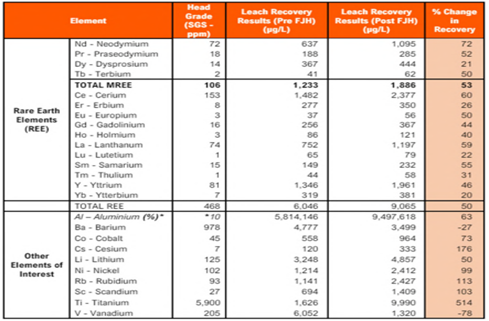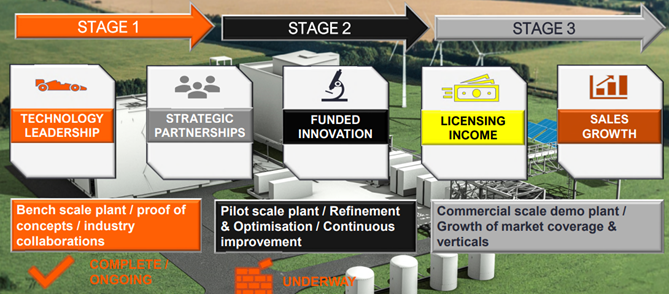MTM Critical Metals (ASX: MTM): A company with technology poised to revolutionise metal refinery as we know it

Metal recovery may never be the same again if MTM Critical Metals (ASX:MTM) has its way. Metal refinery will become increasingly important to meet the world’s need for critical metals as deposits become more scarce and more difficult to discover and bring into production. But current methods have significant time and monetary costs which need to be overcome. This is where MTM and its FJH (Flash Joule Heating) Technology can come in and make a difference.
Introduction to MTM Critical Metals and its FJH Technology
MTM first listed on the ASX as Mt Monger Resources in 2021, and focused on gold exploration. The company pivoted to critical minerals, picking up its Pomme and East Laverton projects and adopted its current name in May 2023.
In December 2023, MTM acquired Flash Metals which had REE-prospective territory adjacent to WA1 Resources (ASX: WA1) along an option to license the FJH technology. Over 2024, the FJH technology has become the company’s focus as testing has continually shown potential in testing undertaken by the company and given rise to expectation that it could generate shareholder value sooner than any of the company’s exploration assets.
FJH is not something MTM discovered for itself, MTM merely licensed it from Rice University. FJH involves the creation of thermal energy through the collision of electrons in a conductor, at a ‘flash pace’. MTM’s FJH can create heat almost instantaneously and reach temperatures as high as 3,000 degrees celsius.
Since MTM licensed the technology, MTM has shown it can be reproduced at scale – at 50 times the original concept. It can impact several metals including battery metals like lithium and various REEs (Rare Earth Elements). By impact, we mean more of the metal can be recovered.
If you aren’t into battery metals right now, and only into gold, you’re not forgotten. Gold is a very common element in E-waste. Gold processing is typically done in smelters and incinerators using methods that are expensive, time-consuming, crude to the environment through direct emissions and toxic by-products, and often unregulated. FJH’s technology applies direct electrical energy under a chlorine gas atmosphere, thus vaporising metals from e-waste and recovering them in a single step without using toxic acids or non-selective incineration.

Source: Company
Why MTM’s FJH is a better way
Metals recycling today tends to be some form of incineration or using industrial sludges. They tend to be expensive, time-consuming, energy-intensive and non-selective (i.e. they do not just remove the metal of interest but take out all the metals as well).
MTM’s FJH Technology overcomes these problems, general to all metal recovery methods, as well as some specific problems to individual commodities. MTM has three target commodities: Lithium, REEs and Gallium. In respect of each of these, FJH could help shorten the process and bring down the time and cost of them. Turning to lithium, FJH can simplify the flowsheet by reducing the number of steps required to extract lithium from spodumene concentrate. With rare earths ores, FJH could potentially improve the processing by removing the need for the ‘acid bake/roasting’ step where rare earth phosphates are converted to rare earth sulphates.
The opportunity for FJH
Recycling will need to be a part of the critical metals supply chain, given the time and cost to bring new deposits into production, not to mention regulations that mandate the use of recycling.
In the EU there have long been such regulations, and the most recent legislation (the EU Sustainable Batteries Regulation) which was enacted in August 2023 provides for recovery targets including 50% recovery of lithium from waste batteries by 2027 and 80% by the end of 2031, as well as 90% recovery for copper by 2027 and 95% by 2031.
The IEA has projected that by 2040, recycling will provide up to 12% of global cobalt demand, 7% of nickel and 5% of lithium and copper demand. As goes without saying, recycling can’t be too expensive and it cannot have too high a carbon footprint. As we have outlined FJH offers a viable alternative to conventional critical mineral recycling.
So what is next?
MTM continues to develop FJH, it is planning for its eventual commercialisation (Figure 8). Once the pilot scale plant has been tested, the inevitable next step is taking FJH it to commercial scale. It is presently seeking strategic collaborations with industry, government and academia. If NeoMetals (ASX: NMT) is any precedent, we could see a (sub-)licensing deal prior to commercial production. When commercialised, FJH will aim to have a sustainable business model with recurring revenue based on the quantity of material processed.

Source: Company
MTM is also seeking non-dilutive funding sources, particularly government grants. Programs such as the Critical Minerals Development Program in Australia and the Critical Minerals & Materials program in the US seek to provide funding towards critical minerals projects so that the supply chain can be diversified before China and nations can still produce the ultimate applications critical metals are used in – particularly defence and decarbonisation applications.
ASX companies including Australia Strategic Minerals and Meteoric Resources have received non-binding pledges for their rare earths projects. We envision that FJH, as a company with a technology that can make such a difference to the metals recovery process, would be appealing to the decision makers.
MTM Critical Metals has a big opportunity
Our friends Pitt Street Research published a note on MTM earlier this week. It reckons MTM should be trading at a market capitalisation of over A$60m, which would be roughly double the company’s current share price. Such a valuation would be in line with its peers that are at a similar stage. Although the company has some way to go to reach a stage worthy of its $1bn+ peers, Pitt Street Research thinks A$60m would not be unreasonable once MTM’s FJH has passed pilot-scale testing and has secured a licensing deal.
Keep your eye on MTM Critical Metals.
MTM Critical Metals is a research client of Pitt Street Research. Pitt Street Research directors own MTM shares.
What are the Best ASX Stocks to invest in right now?
Check our ASX stock buy/sell tips
Blog Categories
Get Our Top 5 ASX Stocks for FY26
Recent Posts
NEXTDC or Coreweave, which is the better long-term Investment
Two Roads to Data Dominance Many investors, particularly those focused on growth and technology, already understand that data and the…
Meteoric Resources (ASX:MEI) Surges 28% as Caldeira Wins Key Environmental Approval
Investors Reprice Meteoric Resources After Caldeira Rare Earths Licence Meteoric Resources (ASX:MEI) has seen a sharp rerating this month, with…
Is Telix Pharmaceuticals (ASX:TLX) Now Undervalued With Phase 3 China Clinical Success?
Why Telix Pharmaceuticals Pullback Could Be a Second Chance Telix Pharmaceuticals (ASX:TLX) has faced a challenging year, particularly for a…



